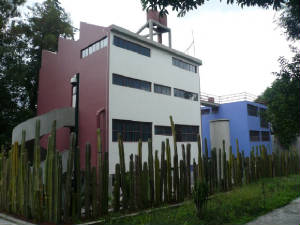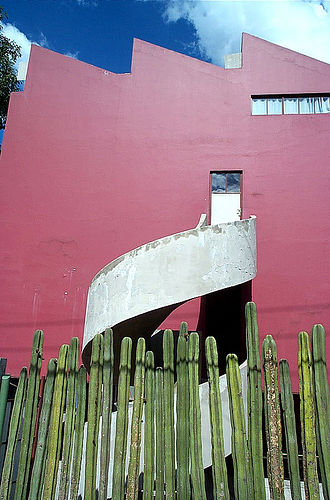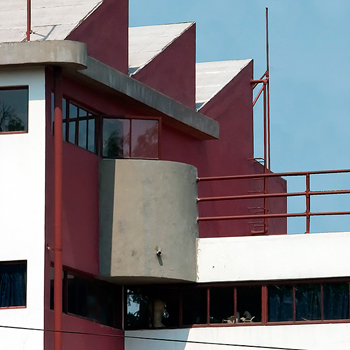|
Frida Kahlo and Diego Rivera Museo Casa Azul |
|
|
History Behind their Home Studio |
|
|
Here you can see the spiral stair case that is on the exterior of the house, which links the two houses together. It was
a unknown style of architecture during the time it was built in the 1920's by Juan O'Gorman. This querky characteristic, makes
the house itself a work of art.
|
Mexico city in itself is a spectacle like no other i have personally experienced. Its in the top ten of many world wide
polls for population, size and pollution due to the respective characteristics. The hustle and bustle excites
me, as the culture, excitement, but relaxed attitude of the people capture my imagination. It all sounds somewhat
contradicting, but it is the juxtaposition of the various parts of the city that makes Mexico City so awe inspiring and
what really captured my heart. The juxtaposition of the city is no more apparent than the quiet leafy, green suburb, only a few roads of the beaten
track of the city, that is home to a pair of modernist houses built for Diego Rivera and Frida Kahlo in 1931-32
by the leading architect of the time, Juan O'Gorman. On what was once a quiet corner, tucked behind an organ cactus fence,
sits a small compound with a large maroon-coloured house (Diego's) and a much smaller blue abode, (Frida's) connected by a
rooftop-causeway. From 1933 to 1941 they both stayed here, living and working apart, yet still near enough to visit each other
and for Frida to deliver Diego's meals. In both buildings, walls are concrete, floors are wooden and many of the windows,
especially in Diego's studio, are floor to ceiling - all very advanced for the early 1930s, especially in Mexico. The
whole set-up is in such contrast to the Blue House 'Casa Azul' in Coyoacán that it is hard to imagine the same people
living in both places. Diego's studio contains some of his materials along with personal items, reproductions of some of his work and some large
papier-mâche skeletons- 'Judas'. Temporary exhibits take up much of Frida's house, though there are a couple of fine portraits
of her taken by Nikolas Muray, with whom Frida had an affair in the late 1930s. It also shows some of Frida's own ex-voto
paintings of her debilitating accident. (see picture)
|



